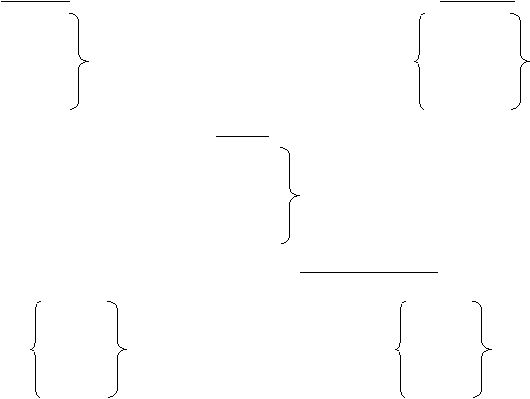
37
past perfect (had been) and participle 1 of the notional verb.
In the interrogative the first auxiliary (had) comes before the subject, and the second auxiliary (been) and
participle I follow the subject.
In the negative the corresponding negative forms of the first auxiliary (had) are used, the second auxiliary
(been) and participle I follow the negation.
In the negative-interrogative the corresponding negative-interrogative forms of the first auxiliary are used
first, the second auxiliary and participle I follow the subject.
The paradigm of the verb in the past perfect continuous
Affirmative
Interrogative
I
He (she, it)
We
You
They
had been speaking
Had
I
he (she, it)
we
you
they
been speaking?
Negative
I
He (she, it)
We
You
They
had not (hadn’t) been speaking
Negative –interrogative
a)
Had
I
he (she, it)
we
you
they
not been speaking?
b)
Hadn’t
I
he (she, it)
we
you
they
been speaking?
§ 41. The past perfect continuous denotes an action which began before a given moment in the past,
continued for a certain period of time up to that moment and possibly still continued at that past
moment.
The moment of time in the past before which the action begins is usually indicated by other past actions in
the past indefinite or, rather rarely, by the past continuous. Sometimes it is indicated directly by adverbials (by
that time, by the 1st of August, etc.).
The past perfect continuous is used with actional verbs to denote:
1. Actions in progress that began before a certain moment of time in the past and continued up to that
moment, but not into it. As a rule no indications of time are present: the exact time of the beginning of the
action is more or less clear from the situation, while the end, closely precedes the given moment of past time
(the exclusive past perfect continuous).
Dick, who had been reading aloud Pit’s letter, suddenly stopped.
I had been feeling very tired, but now I grew alert.
They had been walking rapidly and now they were approaching the spot.
Her eyes were red. I saw she had been crying.
2. Actions in progress that began before a certain moment of time in the past and continued into it. In
this case either the starting point of the action or its duration is indicated (the inclusive past perfect continuous).

